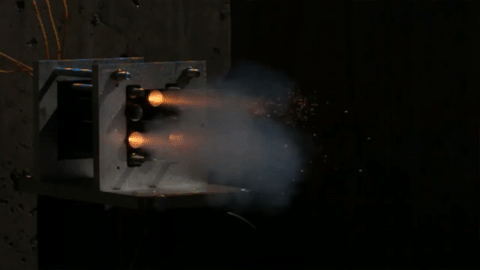CubeSats Have 1 Major Shortcoming, But Not for Long
Posted on Categories Discover Magazine

Over the past decade and a half, satellites the size of a toaster have opened up new possibilities for using space. Called CubeSats, these diminutive spacecraft offer several appealing virtues for scientific and national security missions and one major handicap—but a fix is on the way.
Built to a standard size of roughly 10 centimeters on each side, the featherweight CubeSats can be quickly developed and inexpensively launched, because they piggyback on rockets hauling bigger payloads into low Earth orbit. And they are adaptable: While orbiting, they can be reprogrammed from the ground. Traditional satellites can’t.
All these traits add up to a low risk-to-reward ratio, which makes space accessible to researchers, students, and businesses that otherwise couldn’t afford placing their device or experiment in orbit. And because CubeSats are agile and responsive to an immediate operational need as a situation evolves, they lend themselves naturally to national security missions. That’s why Los Alamos National Laboratory got involved in the technology as part of its national security science programs.
Consider, for instance, the global positioning satellite (GPS) system. While it brings now-essential services to our lives, from banking and auto navigation to national defense, if the GPS system ever went dark, a fleet of CubeSats could back it up by maintaining navigational functions with atomic clocks and providing critical imaging data about what’s happening on the ground.
Motoring
Along with their advantages, CubeSats are hamstrung by one shortcoming: they lack their own rocket motor, and for good reason. Fuel can accidentally leak, ignite or explode during a launch or mission, potentially destroying the entire payload, which is many orders of magnitude more valuable than the CubeSat itself. Nobody wants to share a ride with a CubeSat that might double as a satellite-killing bomb.
Because of that danger, CubeSats are just passengers, which limits their usefulness: they can’t be nudged from one orbit to another. They also can’t be steered back to Earth when they complete their mission, so they hurtle around the planet as space junk until their decaying orbit lapses into a brief, flaming re-entry into the atmosphere.
At Los Alamos, which has a long history of developing propellants as part of the nuclear weapons program, we’re working to solve these problems by developing a simple, uniquely non-detonable segregated fuel oxidizer rocket fuel system.
We’ll Explain
Here’s how this radical new design works. Unlike a traditional composite propellant, which mechanically mixes a fuel and an oxidizer into a high explosive, the new propellant ignites an energetic fuel—really a low explosive. Then hydrogen and nitrogen gases from the burning fuel flow through the solid oxidizer component of the system, which gasifies, mixes with the fuel gases, and unleashes significant thrust.
Both components of this binary system, the energetic fuel and the oxidizer, are immune to detonation, a huge advantage over other rocket fuels. Even the shock from the detonation of a material like C-4 in direct contact with the motor would not cause the propellant itself to detonate. Also, because the system uses solid materials, it cannot leak, has no pressurized gases and has no moving parts like a liquid system.
Besides being able to power CubeSats and thus greatly increase their utility and flexibility, the propellant offers safe propulsion for many other applications that typically utilize solid rocket motors, even model rockets.
Recognizing the largely untapped potential of CubeSats, the National Academies recently published a report recommending these small orbiters move beyond academic training missions and begin conducting full-fledged scientific research. CubeSats could be helpful in astronomy, Earth science, solar physics, and micro-gravity biology, for example.
The Academies also suggested developing propulsion systems for CubeSats, and, further, urged developing de-orbiting schemes to help limit the clutter in space. By increasing CubeSat mobility, the Los Alamos segregated fuel oxidizer directly contributes to both those goals.
Los Alamos has been studying high-explosives and their cousins in the energetic materials family—propellants—since the Manhattan Project during World War II. Laboratory research continues to refine these materials for both uses. Many of the same properties that make a fuel safe by preventing accidental detonation also apply to the high explosives used in various weapons systems, which should never go off accidentally. It’s funny how understanding what makes stuff blow up is key to making stuff that doesn’t blow up—and to giving CubeSats a boost into a new space age.
Bryce Tappan, an energetic materials chemist in the High Explosives Science and Technology group at Los Alamos National Laboratory, led the team developing the segregated-fuel oxidizer system. Other team members include Alan Novak, Eva Baca, Grant Risha, a Professor at Penn State University Altoona, and Joseph Lichthardt, a graduate student working with Tappan at Los Alamos National Laboratory.